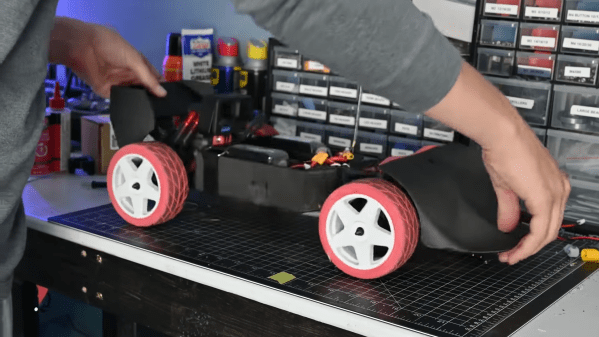There’s a bit of a high-speed arms race in the RC world on YouTube these days. [Michael Rectin] is in on the action, and he’s been exploring how to 3D print a decent set of tires to help his RC car reach higher speeds mph.
His first efforts involved experiments with TPU. The tires looked okay, but had very little traction. He later moved on to VarioShore TPU, a filament capable of delivering various properties depending on the printing method. Printing for the softest, and thus grippiest, possible tires, [Michael] whipped up some sporty looking boots for his wheels.
His tires improved over off-road RC tires in one major way. His design didn’t suffer significant ballooning as the rotational velocity increased. However, the VarioShore material lacked grip compared to off-the-shelf rubber RC tires designed for high-speed use. The commercially-available tires also offered a smoother ride.
[Michael] also demonstrated some neat tricks for high-speed RC driving. He used a modified flight controller to correct the car’s steering in response to perturbations, and put in a scaling method that reduces steering inputs at higher speed. That didn’t entirely stop the carnage though, with some incidents seeing wheels thrown off in big tumbling crashes.
Electric-powered RC cars can go darn quick these days, but you might want to consider jet power if you want to break records. Video after the break.

















